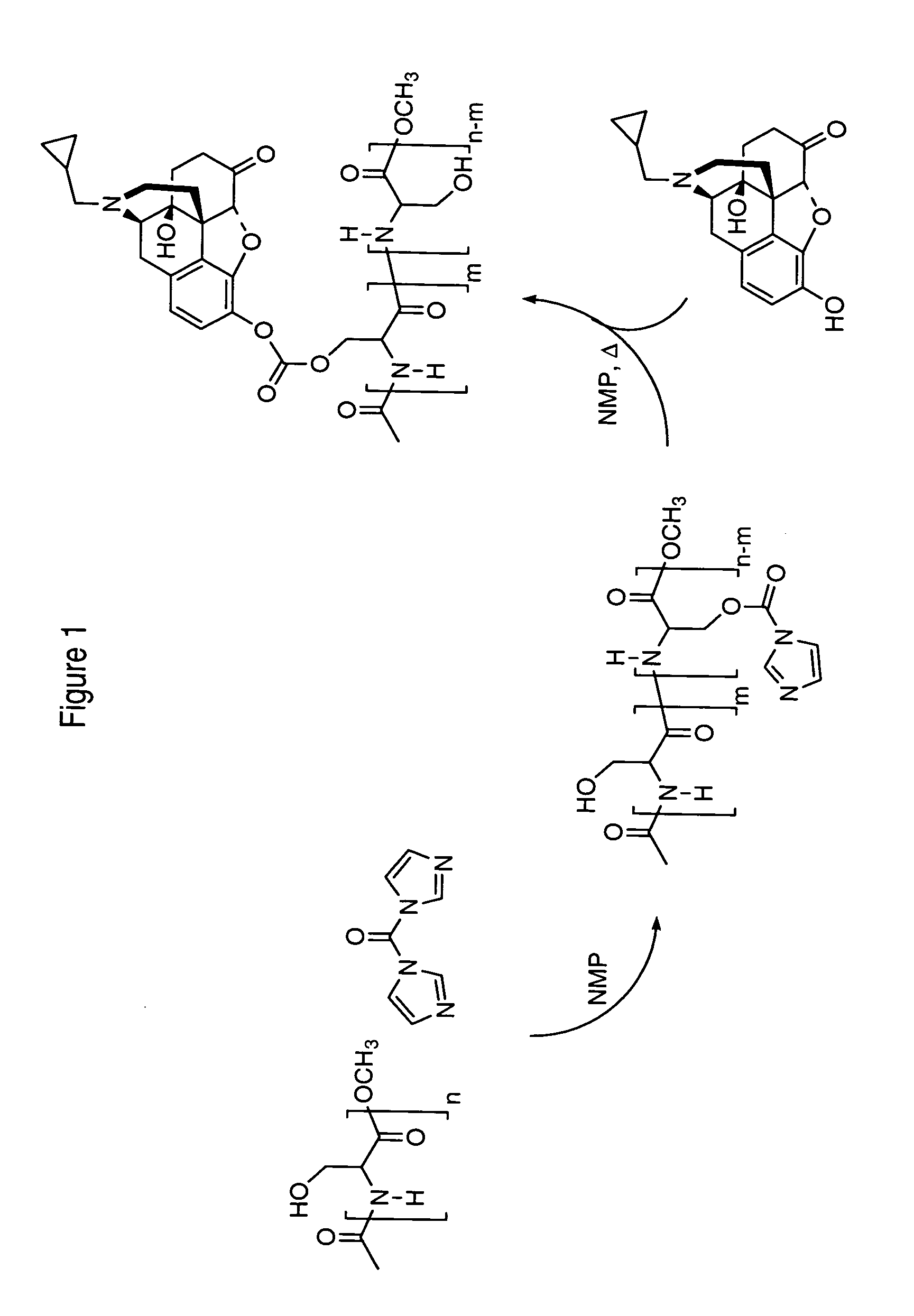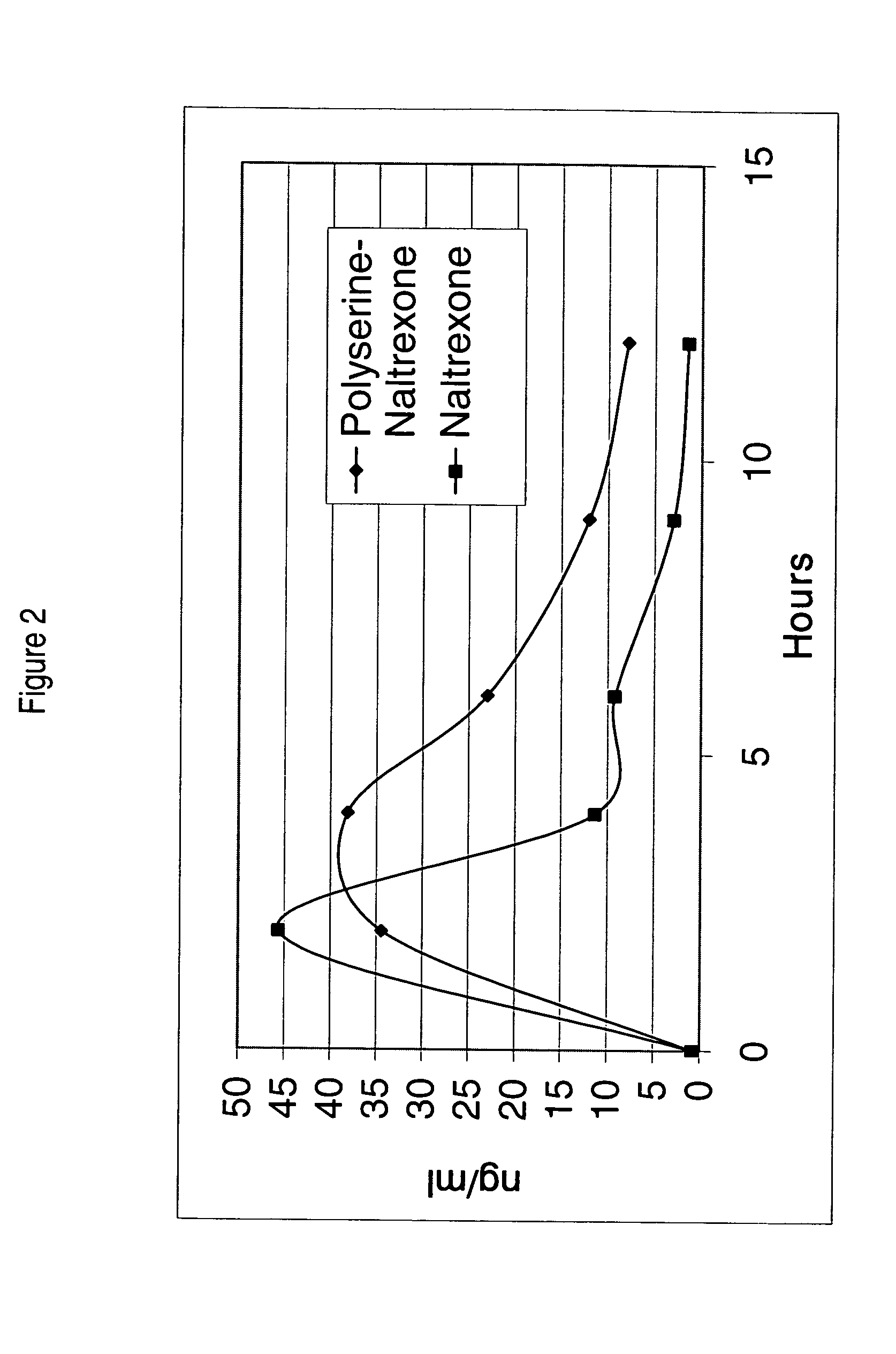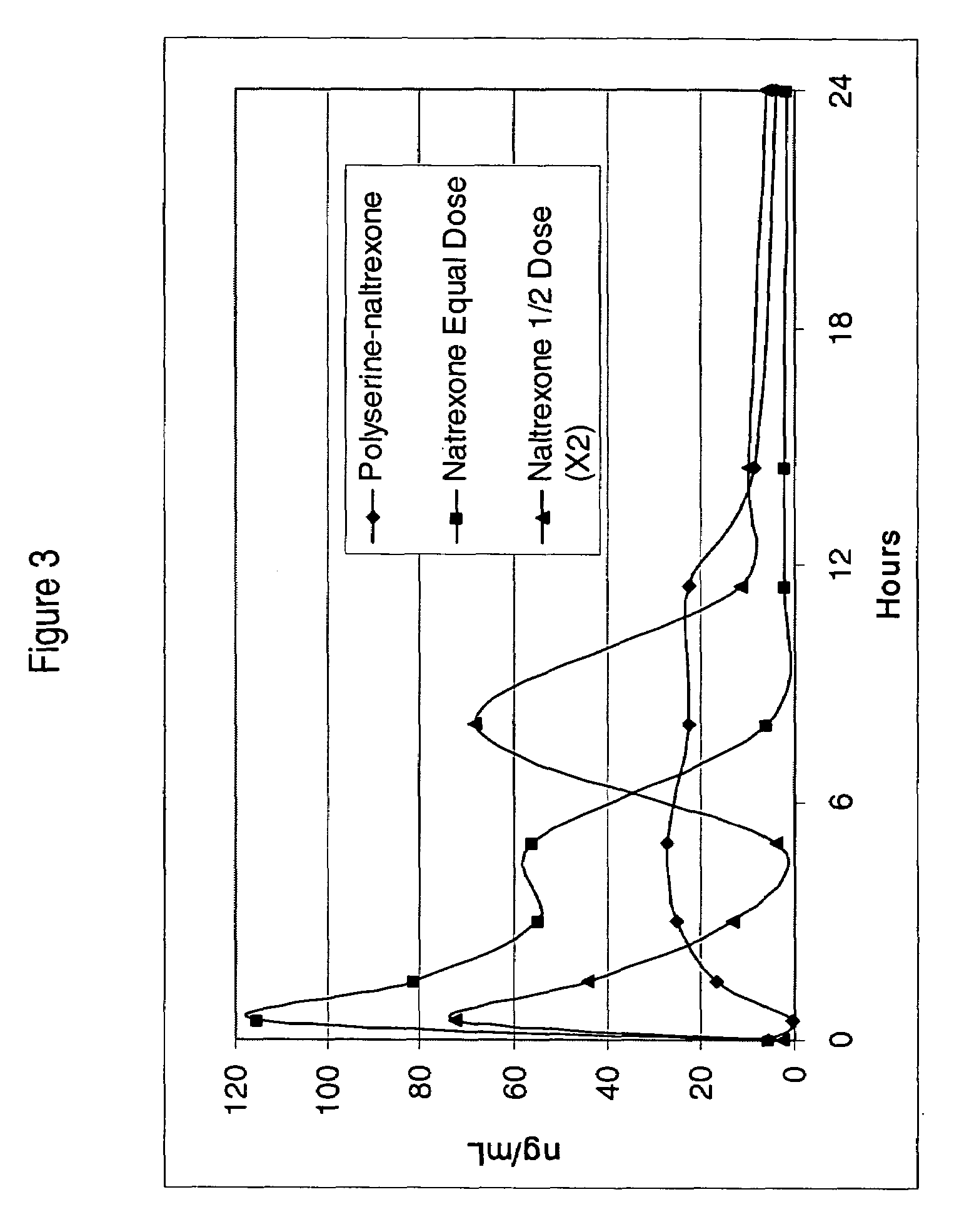Sustained release pharmaceutical compounds to prevent abuse of controlled substances
a technology of controlled substance abuse and pharmaceutical compounds, applied in the field of new pharmaceutical compounds, can solve the problems of widespread abuse of this drug, difficult extraction of secondary substances, and increasing abuse of analgesics prescribed for acute and chronic pain over the last decad
- Summary
- Abstract
- Description
- Claims
- Application Information
AI Technical Summary
Benefits of technology
Problems solved by technology
Method used
Image
Examples
example 1
[0101]Naltrexone, an opioid antagonist, was chosen as a model compound for testing conjugates for the hypothesis that conjugates of opioid drugs can afford extended release, while also lowering the potential for abuse. Naltrexone is chemically similar to orally delivered analgesics such as oxycodone and hydromorphone and therefore amenable to synthesizing conjugates for testing in vitro and in vivo performance.
Synthesis
[0102]Polyserine-naltrexone (carbonate-linked) conjugates were synthesized by the following method:[0103]1) Polymer activation. N-acetylated polyserine-methyl ester (0.69 g, 7.9 mmol) was dissolved in N-methylpyrolidinone (15 ml) and allowed to stir under argon at ambient temperature. Carbonyldiimmidazole (CDI, 1.93 g, 11.9 mmol) was added and the reaction allowed to stir over night under argon. Then, 100 ml of acetonitrile were added and the mixture allowed to sit at 4° C. for 2 hours. The precipitate that formed was collected by centrifugation and the resu...
example 3
In Vivo Performance of Polyserine-naltrexone Conjugate
[0110]Polyserine-naltrexone conjugates were tested in Sprague-dawley rats (˜250 g). Defined doses were delivered orally in gelatin capsules containing purified dry powder polyserine-naltrexone conjugates or naltrexone. No excipients were added to the capsules.
[0111]Content of naltrexone in the polyserine-naltrexone conjugate BB272 was estimated to be 30% as based on the 1:6 ratio of naltrexone:serine determined by NMR. Polyserine-naltrexone conjugate was given to five rats at a dose of 12.9 mg which contained 3.6 mg of naltrexone. Doses equivalent to the naltrexone contained in the batch of polyserine-naltrexone (BB 301) were also given to five rats. Additionally, half the equivalent dose (1.8 mg) was given at time-zero, followed by a second half-dose at 6.5 hours to five rats.
[0112]Capsules were delivered orally to rats at time-zero using a capsule delivery syringe. Serum was collected at 0.5, 1.5, 3, 5, 8, 12, 15 and 24 hours a...
example 4
Synthesis of an Analog of Hydrocodone
[0117]A synthesized analog of hydrocodone, the compound, 6-O-ethoxycarbonyl hydrocodone (EtOCOhydrocodone), was prepared by reaction of the enolate of hydrocodone with ethylchloroformate. The hydrocodone portion was not released under a wide range of pH's and temperatures. EtOCOhydrocodone was studied in a rat model and its pharmacokinetics was nearly identical to that of the reference drug (FIG. 4). Ethoxycarbonylhydrocodone's AUC is 90% of hydrocodone's AUC. EtOCOhydrocodone meets the criteria for an abuse-free narcotic (i.e., stability and in vivo release) when injected.
[0118]Further, the C-terminus of glutamic acid, leucine, proline, lysine, serine and glycine where attached to the 6-O position of hydrocodone and the C-terminus of glutamic acid to the 6-O position of oxycodone. FIG. 5 shows a general scheme for how amino acid / narcotic conjugates are synthesized using oxycodone and hydrocodone as examples. The anion of oxycodone (or hydrocodon...
PUM
| Property | Measurement | Unit |
|---|---|---|
| volumes | aaaaa | aaaaa |
| volume | aaaaa | aaaaa |
| volume | aaaaa | aaaaa |
Abstract
Description
Claims
Application Information
 Login to View More
Login to View More - R&D
- Intellectual Property
- Life Sciences
- Materials
- Tech Scout
- Unparalleled Data Quality
- Higher Quality Content
- 60% Fewer Hallucinations
Browse by: Latest US Patents, China's latest patents, Technical Efficacy Thesaurus, Application Domain, Technology Topic, Popular Technical Reports.
© 2025 PatSnap. All rights reserved.Legal|Privacy policy|Modern Slavery Act Transparency Statement|Sitemap|About US| Contact US: help@patsnap.com



